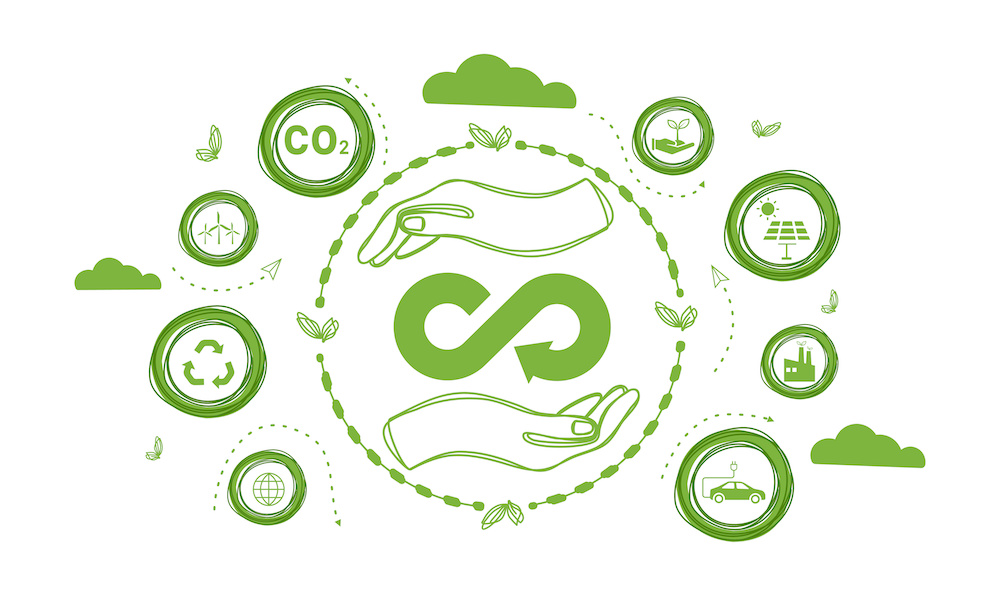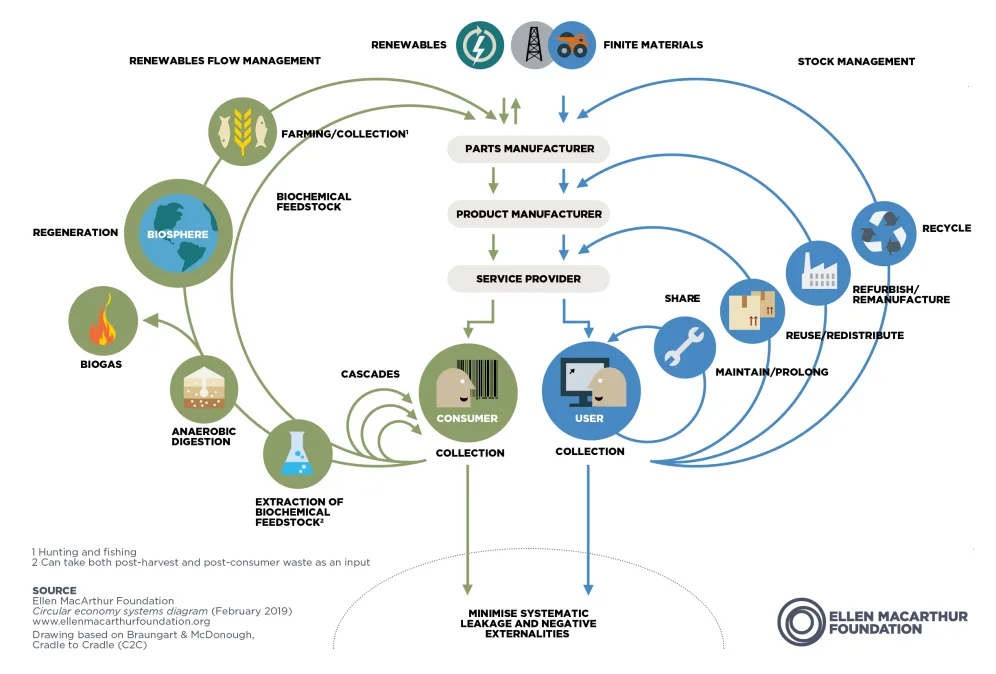What is a Circular Economy?
📗 Column
Today, we live in a world driven by a linear economy based on a “take-make-waste” approach. With the earth’s resources being depleted at an unprecedented rate and so much waste being generated daily, an alternative “circular economy” model is gaining attention worldwide. But what exactly is a circular economy? In this post, we will go through some basics of a circular economy.

What is the definition of a circular economy?
The Ellen MacArthur Foundation, a global organization working to accelerate the transition to a circular economy, defines a circular economy as “an industrial system that is restorative or regenerative by intention and design” [1].
Three principles for a circular economy framework
The circular economy is built on three key principles driven by design [2]:
1) Elimination of waste and pollution The first principle focuses on upstream design. Waste and pollution are designed out in the first place. With an emphasis on design, products in the technical cycle (see below) are durable, reusable, repairable, and easy to disassemble.
2) Circulation of products and materials (at their highest value) Products and materials are kept in circulation as long as possible. The Ellen MacArthur Foundation explains circular processes using their circular economy systems diagrams, also known as the butterfly diagram. In the technical cycle, products and materials keep circulating through sharing, maintaining, reusing, redistributing, refurbishing, remanufacturing, and recycling [3]. In the biological cycle, biodegradable materials are fully made use of, or cascaded, before being returned to the earth through processes such as composting and anaerobic digestion. Products that are used instead of consumed, such as phones or laptops, circulate in the technical cycle, while consumable products like food circulate in the biological cycle. In some cases, products could move from the technical to the biological cycle. For example, products made of cotton or wood could first circulate in the technical cycle and eventually move to the biological cycle once they can no longer be reused or remanufactured into new products [4].
3) Regeneration of nature Rather than degrading nature by extracting finite resources, destroying biodiversity, generating pollution, and so on, a circular economy approach focuses on reviving nature by building natural capital. For instance, regenerative farming practices like agroecology, conservation agriculture, and agroforestry can improve soil health, minimizes the extraction of finite resources, reduce greenhouse gas emissions, and free up land [5].

Source [6]: Ellen MacArthur Foundation, “The butterfly diagram: visualising the circular economy.”
How circular are we today?
Unfortunately, the world economy today is far from circular. The global circularity in 2023 has dropped to 7.2%, down from 9.1% in 2018, according to a 2023 report by Circle Economy [7].
Transitioning from a linear to a circular economy is imperative for a sustainable future — this is also the case with the solar energy industry. While focusing on better design is crucial, we need to establish a robust reuse and recycling market to deal with solar PV panels already in the market. Check out more of our articles to learn about solar PV panel reuse and recycling.
References
[1] Ellen MacArthur Foundation, “Towards the circular economy Vol. 1: an economic and business rationale for an accelerated transition,” 2013. Accessed: Apr. 15, 2023. [Online]. Available: https://ellenmacarthurfoundation.org/towards-the-circular-economy-vol-1-an-economic-and-business-rationale-for-an
[2] Ellen MacArthur Foundation, “What is a circular economy?” https://ellenmacarthurfoundation.org/topics/circular-economy-introduction/overview (accessed Apr. 17, 2023).
[3] Ellen MacArthur Foundation, “The technical cycle of the butterfly diagram”, Accessed: Apr. 16, 2023. [Online]. Available: https://ellenmacarthurfoundation.org/articles/the-technical-cycle-of-the-butterfly-diagram
[4] Ellen MacArthur Foundation, “The biological cycle of the butterfly diagram”, Accessed: Apr. 16, 2023. [Online]. Available: https://ellenmacarthurfoundation.org/articles/the-biological-cycle-of-the-butterfly-diagram
[5] Ellen MacArthur Foundation, “Regenerate nature.” https://ellenmacarthurfoundation.org/regenerate-nature (accessed Apr. 17, 2023).
[6] Ellen MacArthur Foundation, “The butterfly diagram: visualising the circular economy.” https://ellenmacarthurfoundation.org/circular-economy-diagram (accessed Apr. 16, 2023).
[7] Circle Economy, “The Circularity Gap Report 2023,” 2023. Accessed: Apr. 20, 2023. [Online]. Available: https://www.circularity-gap.world/2023
Author: Saki Kobayashi / 小林 さき